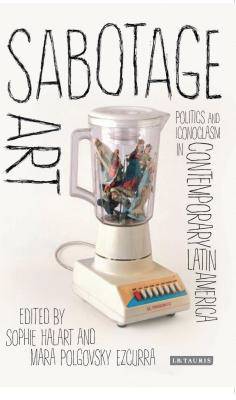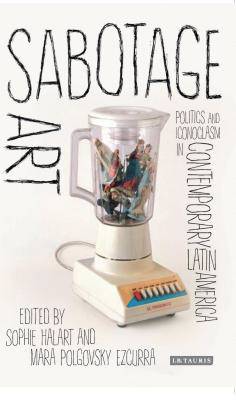
Door een staking bij bpost kan je online bestelling op dit moment iets langer onderweg zijn dan voorzien. Dringend iets nodig? Onze winkels ontvangen jou met open armen!
- Afhalen na 1 uur in een winkel met voorraad
- Gratis thuislevering in België vanaf € 30
- Ruim aanbod met 7 miljoen producten
Door een staking bij bpost kan je online bestelling op dit moment iets langer onderweg zijn dan voorzien. Dringend iets nodig? Onze winkels ontvangen jou met open armen!
- Afhalen na 1 uur in een winkel met voorraad
- Gratis thuislevering in België vanaf € 30
- Ruim aanbod met 7 miljoen producten
Zoeken
Sabotage Art
Politics and Iconoclasm in Contemporary Latin America
€ 271,45
+ 542 punten
Omschrijving
Sabotage is the deliberate disruption of a dominant system, be it political, military or economic. Yet in recent decades, sabotage has also become an artistic strategy most notably in Latin America. In Brazil, Colombia, Mexico, Chile and Argentina, artists are producing radical, unruly or even iconoclastic work that resists state violence, social conformity and the commodification of art. Sabotage Art reveals how contemporary Latin American artists have resorted to sabotage strategies as a means to bridge the gap between aesthetics and politics. The global status of and market for Latin American art is growing rapidly. This book is essential reading for those who want to understand this new, dissident work, as well as its mystification, co-option and commercialisation within current academic historiographies and art-world curatorial initiatives."
Specificaties
Betrokkenen
- Uitgeverij:
Inhoud
- Aantal bladzijden:
- 256
- Taal:
- Engels
- Reeks:
Eigenschappen
- Productcode (EAN):
- 9781784532253
- Verschijningsdatum:
- 28/04/2016
- Uitvoering:
- Hardcover
- Formaat:
- Genaaid
- Afmetingen:
- 140 mm x 218 mm
- Gewicht:
- 453 g

Alleen bij Standaard Boekhandel
+ 542 punten op je klantenkaart van Standaard Boekhandel
Beoordelingen
We publiceren alleen reviews die voldoen aan de voorwaarden voor reviews. Bekijk onze voorwaarden voor reviews.










